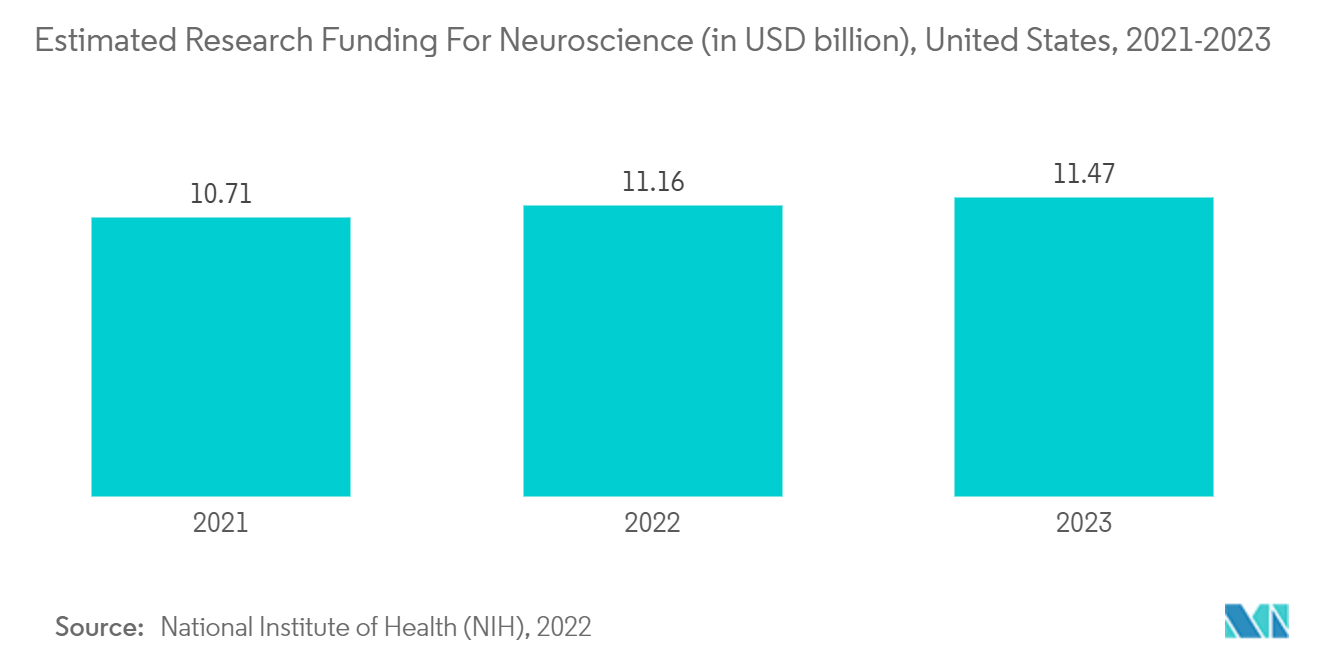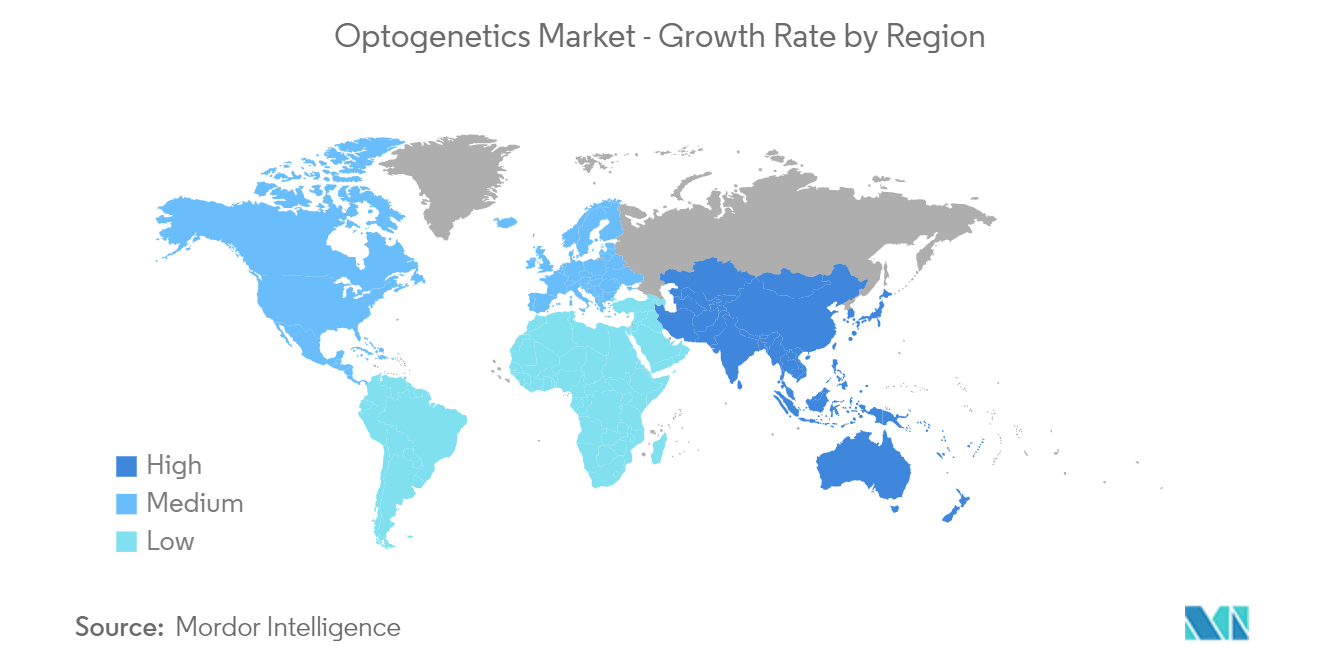Market Trends of Optogenetics Industry
Light-emitting Diode (LED) Segment is Expected to Hold a Significant Share in the Optogenetics Market
Light-emitting diodes (LED) surpass lasers in every aspect, as they are cheaper, smaller, more reliable, and easier to control. They are being incorporated into implants, allowing untethered light delivery. Factors such as investment in technology, product launches, and research studies in the segment are expected to drive the segment's growth.
For instance, according to a study published by Frontiers in January 2022, a near-infrared ultrafast laser micro irradiation platform can be used to deliver gene encoding for neuroprotective and anti-angiogenic pigment epithelium-derived factor (PEDF) molecules to the retina, which exhibits protection from different insults. The research studies expanding the scope of light-emitting diode (LED) may also contribute to the market's growth.
The rising prevalence of neurological disorders is also expected to boost segment growth. For instance, according to an article published by the lancet regional health in April 2022, a study was conducted in Latin America and the Caribbean countries, including Argentina, showing a moderately high pooled prevalence of idiopathic epilepsy in Argentina.
The rising number of clinical trials is also expected to boost segment growth. For instance, in January 2021, SYMBXX initiated two clinical trials in Adelaide, Australia, and Toronto, Canada, to develop laser light therapies to reduce the debilitating symptoms of Parkinson's disease. The clinical trials focused on seeking regulatory approvals may drive the market during the forecast period. The increasing research spending on neuroscience is also expected to boost the adoption of light-emitting diodes (LED).
Therefore, factors such as the rising number of clinical trials, the rising prevalence of neurological disorders, and the increasing R&D in neurological diseases are anticipated to boost the segment's growth during the forecast period.

North America is Expected to Hold a Significant Market Share Over the Forecast Period
North America is expected to lead the market due to the increasing use of optogenetic devices, primarily in academic and research labs, the high burden of chronic diseases in the region, and the collaborations and new product launches by key market players.
Increasing government initiatives in the neurological field are the key growth factors. Increasing funding allows multiple players to enter the market and provide innovative solutions to cater to patient needs. For instance, as per the National Center for Chronic Disease Prevention and Health Promotion in January 2021, 6 in 10 adults in the United States have a chronic disease, and 4 in 10 adults have two or more chronic diseases. These conditions cost USD 3.8 trillion to the country's healthcare system every year, which may significantly impact the growth of the studied market.
The rising prevalence of neurological diseases is also expected to boost the North American market. For instance, according to the report published by the Alzheimer Society of Canada in September 2022, by 2050, more than 1.1 million Canadians will have Alzheimer's dementia, making it the most common type of dementia overall. In addition, in December 2021, the University of British Columbia stated that more than 500,000 Canadians have Alzheimer's or similar dementia. By 2031, it is anticipated that the number will have doubled due to the growing aging population. This shows the high burden of the disease, which is expected to increase the demand for optogenetics products.
The increasing patient population requires more care, increasing the demand for optogenetics and boosting the market's growth. Collaborations and agreements are also anticipated to drive the market. For instance, in September 2021, NeuroLux Inc. announced its exclusive partnership with TSE Systems to integrate its wireless technology with TSE System's IntelliCage and PhenoMaster platforms, providing optogenetic, pharmacology, telemetry, and other capabilities for cutting-edge behavioral neuroscience research. Such collaborations increase innovation due to the synchronization of key players' resources, thus boosting the market.
Similarly, in June 2021, Nanoscope Therapeutics Inc., a clinical-stage biotechnology company that is developing gene therapies for the treatment of retinal diseases, announced that vision improvements for all evaluated advanced retinitis pigmentosa (RP) patients persisted for one year following a single intravitreal injection in a Phase 1/2a clinical study with Multi-Characteristic Opsin (MCO) to retinal cells. Such studies improve the advantages of optogenetics.
Hence, factors such as the rising investment in neurological disease research and the increasing prevalence of neurological disorders are likely to boost the market's growth in the region.

